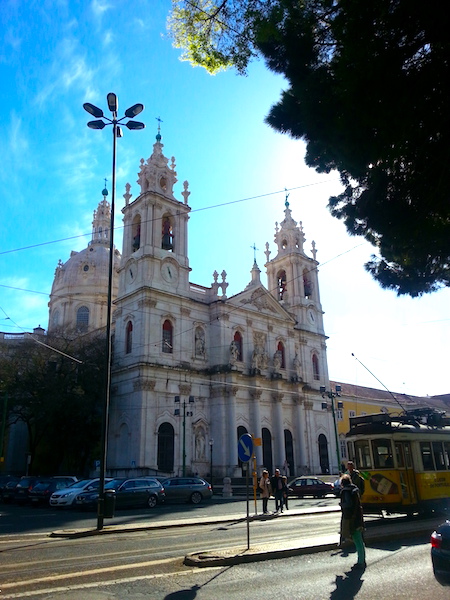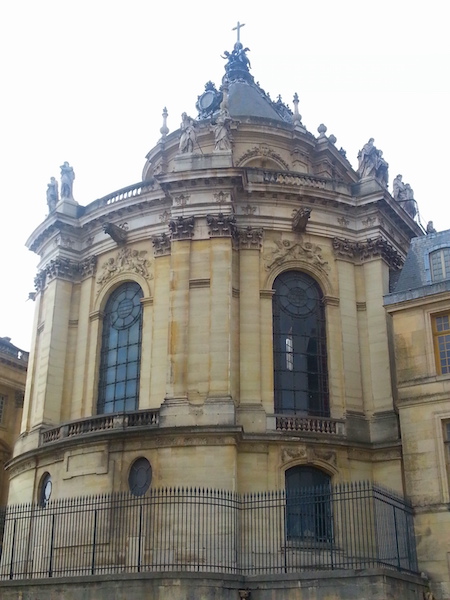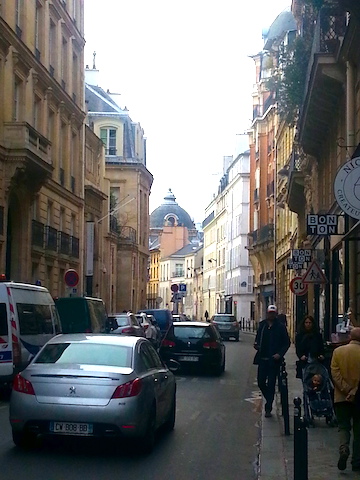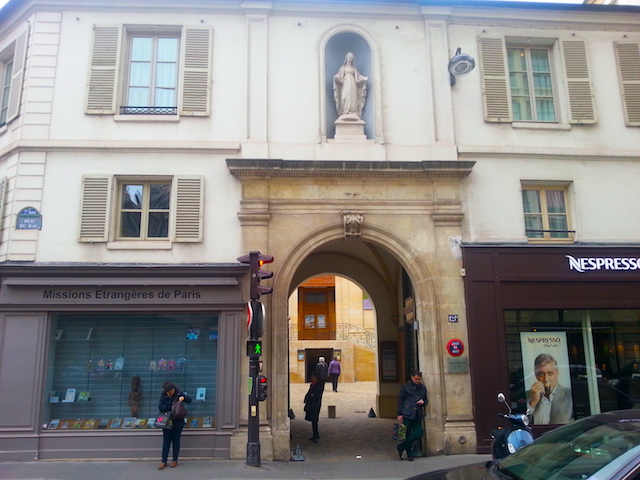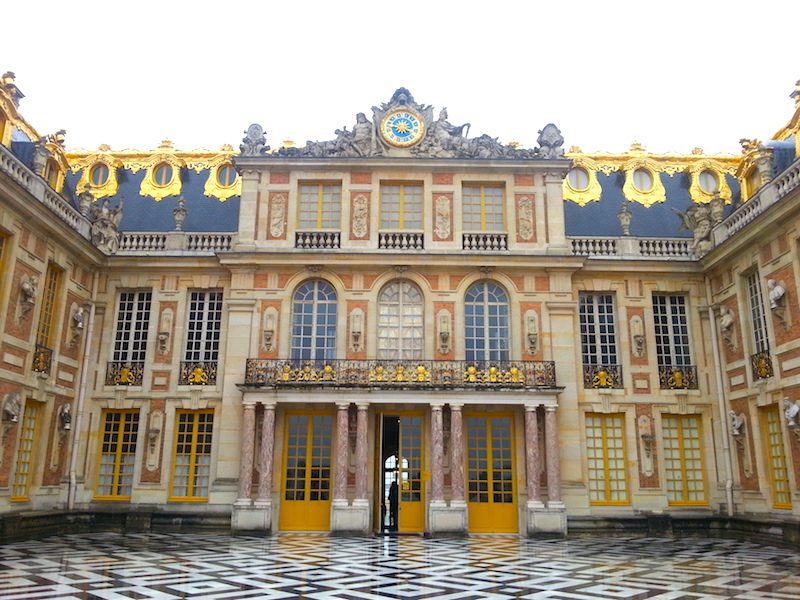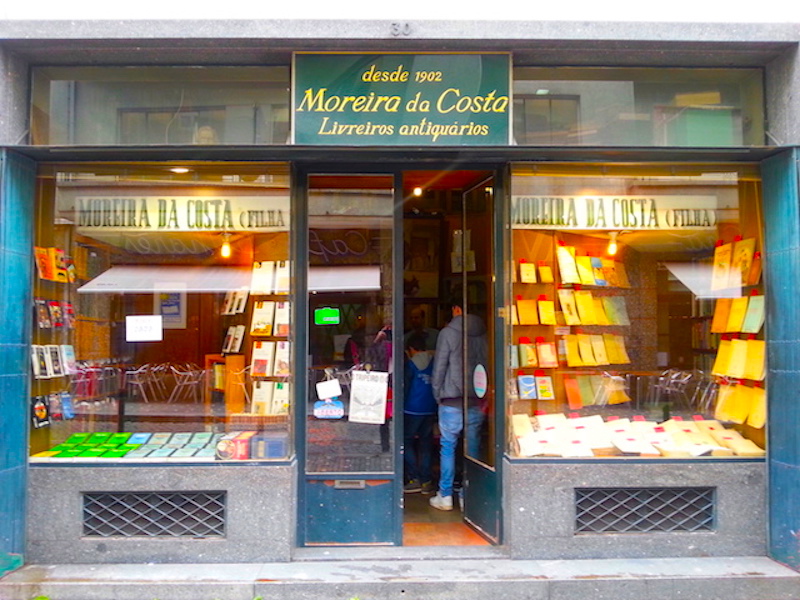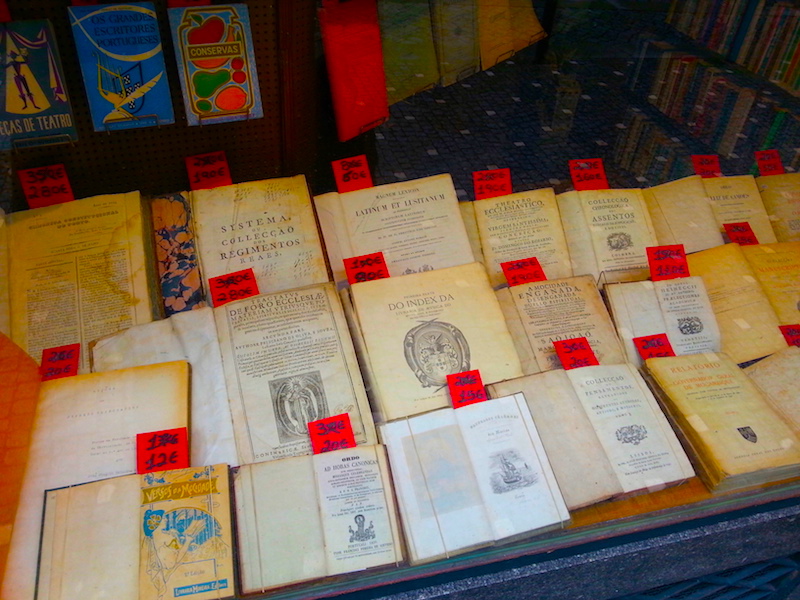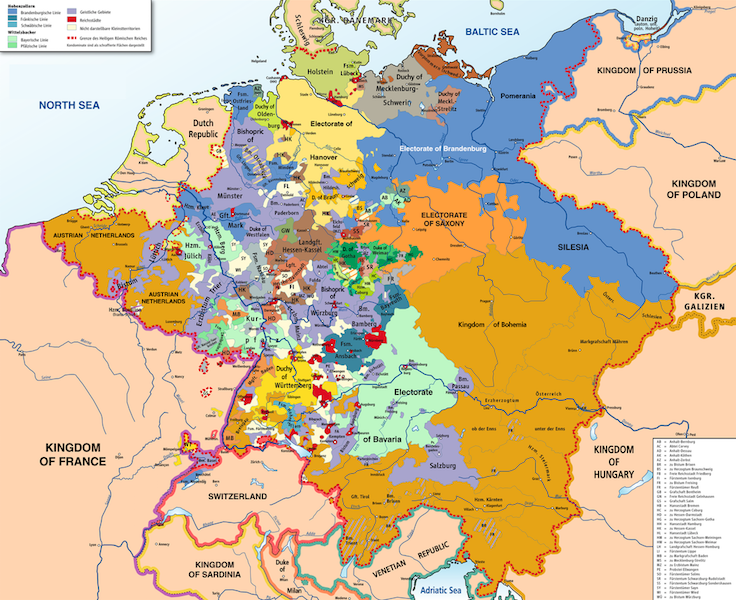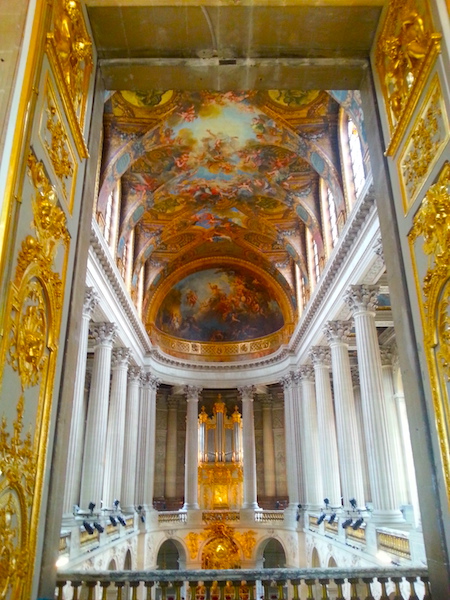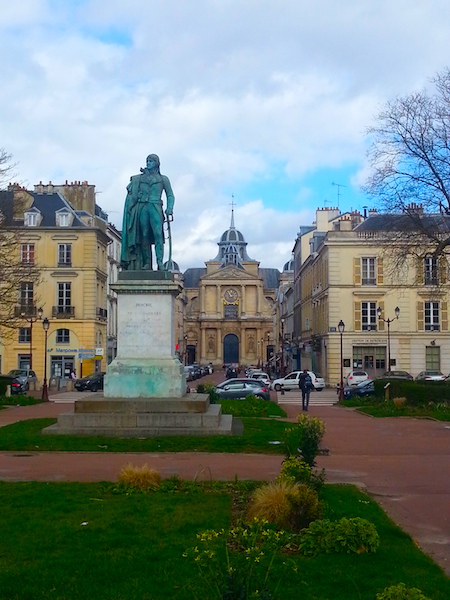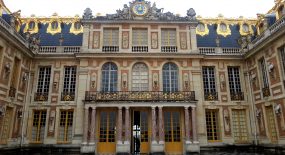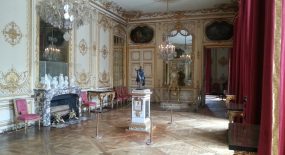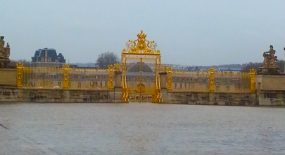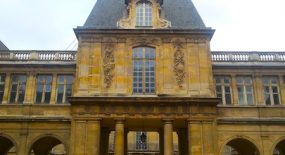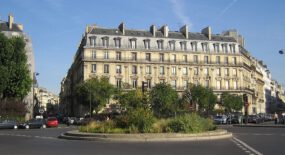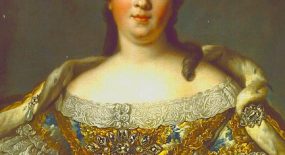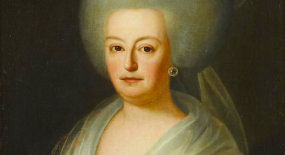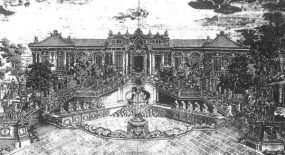It has been said that Louis XIV built Versailles for his court, Trianon for himself, and Marly for his friends.
To that end, Marly consisted of a main house for the King and his immediate family, and 12 guest pavilions. Each pavilion contained 2 apartments, one on each floor. If each guest was married, as many as 48 people could be accommodated. The pavilions faced each other across a water feature in two rows of 6. As the picture below shows, Marly was surrounded by forested hills, which must have given it a pleasing sense of privacy.
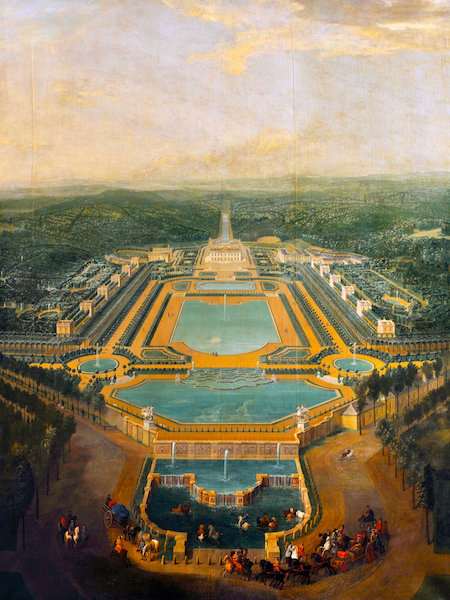
The Domaine de Marly as it appeared in 1724. Credit: fr.wikipedia.org.
Apart from the Queen, and later the King’s second wife, Mme de Maintenon, only his brother, Monsieur, and his son, the Dauphin, had the right to accompany the King to Marly without being invited and had their own permanent rooms there. Everyone else, even other members of the royal family and the Princes of the Blood (i.e. the King’s cousins), had to apply for an invitation, either to the King’s private secretary, or directly to the King himself. As the day for a departure to Marly approached, courtiers would murmur, “Sire, Marly?” as the Grand Monarque made his way from his bedroom at Versailles through the Hall of Mirrors to the chapel. If the King invited a lady to Marly, her husband was automatically included, unlike at Trianon, where he was not. Naturally, invitations were highly sought after.







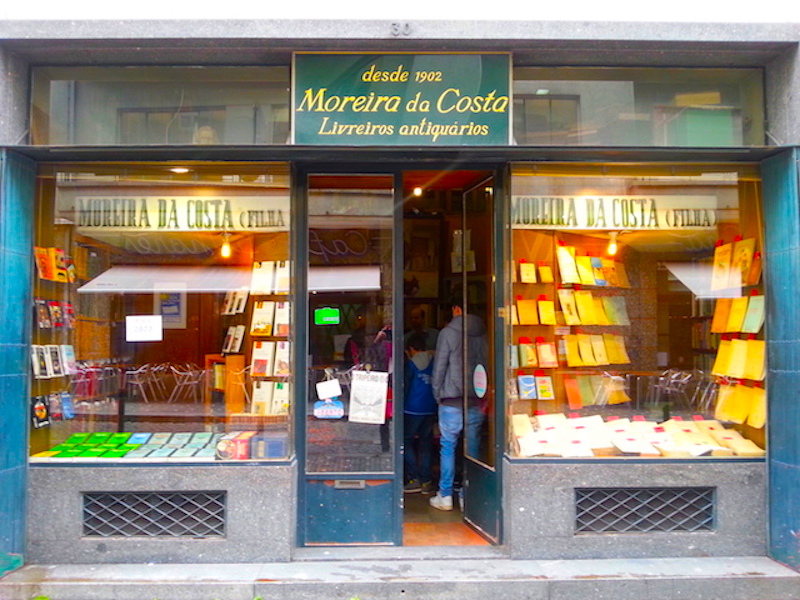
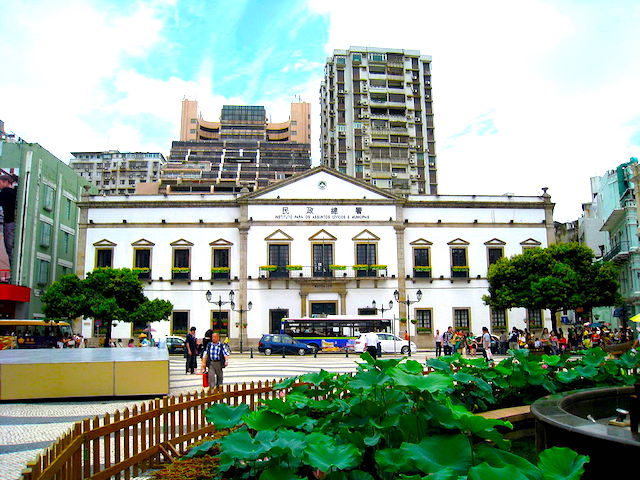
 Senado Square in Macau as seen from a window on the upper floor of the Leal Senado building, 2014.
Senado Square in Macau as seen from a window on the upper floor of the Leal Senado building, 2014.